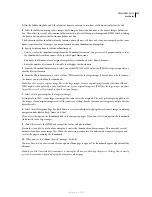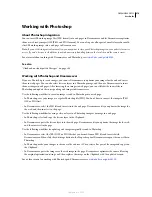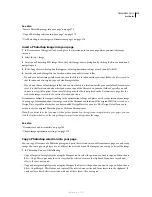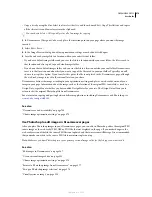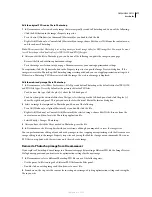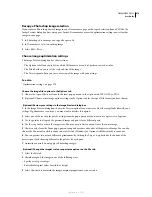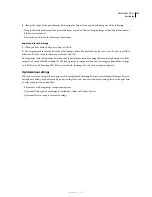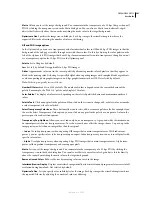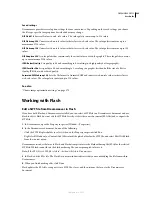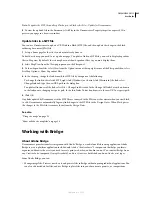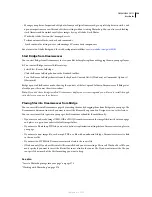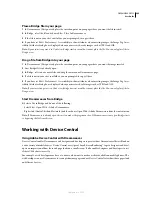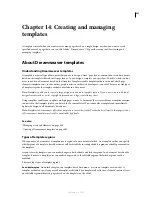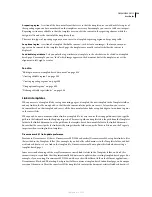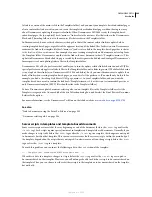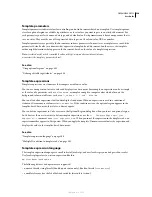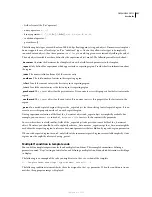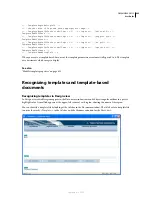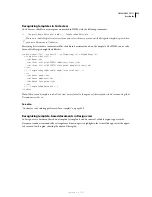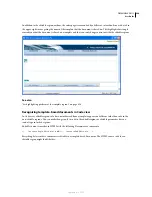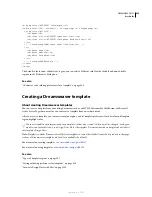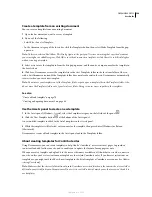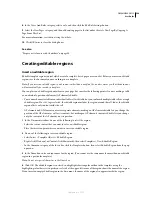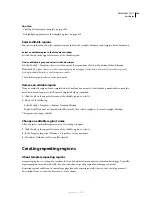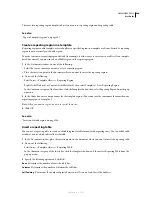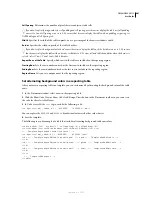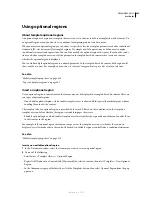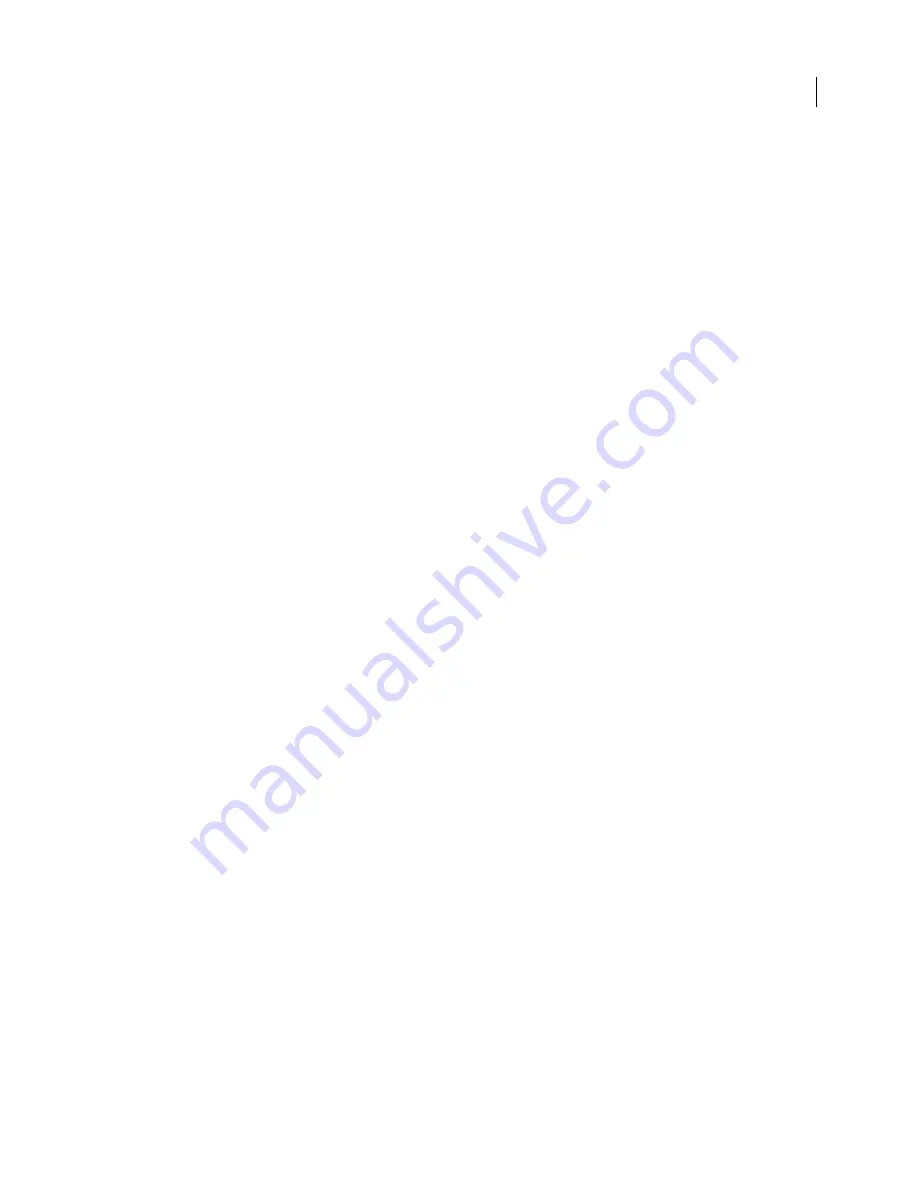
387
Chapter 14: Creating and managing
templates
A template is useful when you want to create many pages based on a single design, or when you want to create
specified areas of a page that users can edit. Adobe® Dreamweaver® CS3 provides many tools for creating and
managing templates.
About Dreamweaver templates
Understanding Dreamweaver templates
A template is a special type of document that you use to design a “fixed” page layout; you can then create documents
based on the template that inherit its page layout. As you design a template, you specify as “editable” which content
users can edit in a document based on that template. Templates enable template authors to control which page
elements template users—such as writers, graphic artists, or other web developers—can edit. There are several types
of template regions the template author can include in a document.
Note:
Templates enable you to control a large design area and reuse complete layouts. If you want to reuse individual
design elements, such as a site’s copyright information or a logo, create library items.
Using templates enables you to update multiple pages at once. A document that is created from a template remains
connected to that template (unless you detach the document later). You can modify a template and immediately
update the design in all documents based on it.
Note:
Templates in Dreamweaver differ from templates in some other Adobe Creative Suite software in that page sections
of Dreamweaver templates are fixed (or uneditable) by default.
See also
“Managing assets and libraries” on page 108
“Creating a Dreamweaver template” on page 395
Types of template regions
When you save a document as a template, most regions of a document are locked. As a template author, you specify
which regions of a template-based document will be editable by inserting editable regions or editable parameters in
the template.
As you create the template, you can make changes to both editable and locked regions. In a document based on the
template, however, a template user can make changes only in the editable regions; the locked regions can’t be
modified.
There are four types of template regions:
An editable region
An unlocked region in a template-based document—a section a template user can edit. A
template author can specify any area of a template as editable. For a template to be effective, it should contain at least
one editable region; otherwise, pages based on the template can’t be edited.
September 4, 2007

